
NASA’s Cassini mission may be entering its last several months now, but that doesn’t mean there aren’t any more cool science discoveries to be made. Some amazing new images were just posted of one of Saturn’s tiniest moons, Pan. This small asteroid-like object orbits Saturn within a gap in the rings and so is known as a ring moon. Scientists had a basic idea of what it looked like before, kind of like a walnut in earlier Cassini images, but the new images show it in much more detail and reveal how odd-looking it really is – more like a giant ravioli or dumpling. There have also been some incredible new close-up images of Saturn’s rings, as Cassini continues the Ring-Grazing Orbits phase of its mission. The images reveal intricate details never seen before in the structure of the rings.
The new Pan images were taken on March 7, 2017 by Cassini, at a distance of 15,268 miles (24,572 kilometers). They are the closest views of Pan that Cassini or any other spacecraft has seen so far. They are raw, unprocessed images, so they haven’t been cleaned up yet, but they are remarkable nonetheless. The “skirt” can be seen from various angles, and surrounds the moon, which is what gave Pan a walnut-like shape in earlier, more distant images. Now, we can see it in more detail, and the thin, curvy edge of the equatorial ridge makes the moon look sort of more like a ravioli or dumpling. The two rounded hemispheres are marked by apparent cracks and ridges, while the ridge is much smoother in comparison.
So how did Pan form? Scientists think that the ridge formed from ring material which accreted onto the moon after it formed. Pan orbits within the Encke Gap in Saturn’s rings, and so could “scoop up” ring material during its orbit. As explained by Cassini’s imaging lead, Carolyn Porco, on Twitter:
“Bulge is ring material accreted onto Pan long after its formation. Ring is very thin so bulge sits on equl region. Pan has little gravity.” In another tweet, she exclaimed, “Pan in mind-blowing detail with its unmistakable accretionary equatorial bulge.”
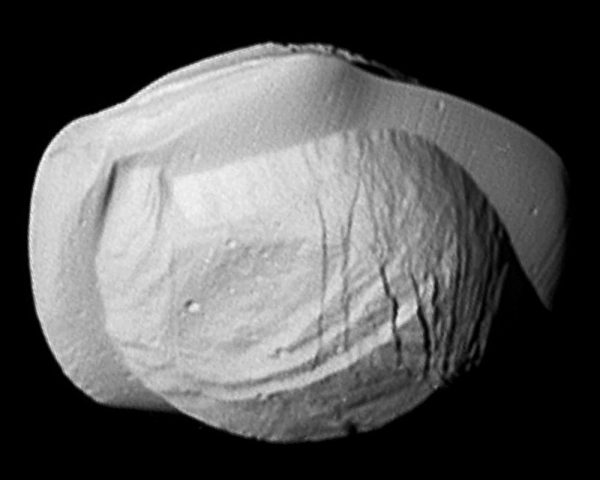
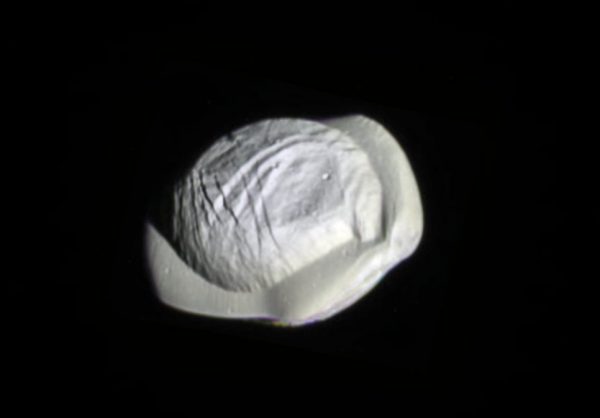
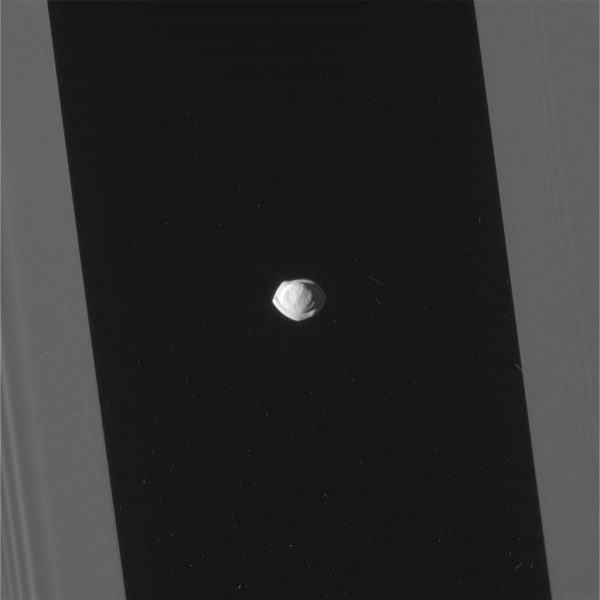
The new images even took her by surprise, as she added that “I, too, thought when I first saw these pics they must be an artist’s depiction and not real. They are real! Science is better than fiction.”
Pan is very small, only about 22 miles (35 kilometers) in diameter, and is one of the innermost orbiting moons of Saturn. It is thought that Pan, and some other small moons of Saturn, were once denser cores of material, about one-third to one-half of their current size. It was these cores which formed the gaps in the rings where they now reside.
Another small moon of Saturn, Atlas, is even smaller and has a similar kind of shape, as seen in the best images so far. Atlas orbits just outside the edge of Saturn’s A Ring. Atlas has a mean radius of 9.4 miles (15.1 kilometers). In 2004, Cassini also found a temporary faint ring of material in Atlas’ orbit.
As also reported earlier, Cassini has been taking some breathtaking images of Saturn’s rings, during the Ring-Grazing Orbits phase of the mission, as the spacecraft orbits closer to the planet and prepares for its final plunge into Saturn’s atmosphere in September. Many more images have been sent back by the probe since then as well.
“This is it, the beginning of the end of our historic exploration of Saturn. Let these images – and those to come – remind you that we’ve lived a bold and daring adventure around the Solar System’s most magnificent planet,” said Porco.
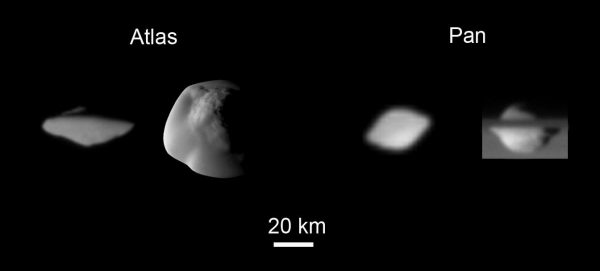
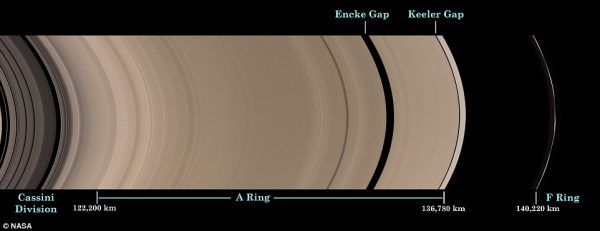
The Ring-Grazing Orbits phase began last Nov. 30, and will consist of 20 week-long orbits which pass very close to the outer edges of Saturn’s rings. In each pass, the spacecraft also passes over the northern hemisphere just before “grazing” the rings. Later, more passes will bring Cassini even closer to the edges of the rings, providing some of the closest images of the rings and the tiny moons (such as Pan now) which also orbit in that region.
“We’re calling this phase of the mission Cassini’s Ring-Grazing Orbits, because we’ll be skimming past the outer edge of the rings,” said Linda Spilker, Cassini project scientist at NASA’s Jet Propulsion Laboratory in Pasadena, Calif. “In addition, we have two instruments that can sample particles and gases as we cross the ring plane, so in a sense Cassini is also ‘grazing’ on the rings.”
These new, closer-than-ever flybys of the rings are showing them in detail never seen before. Many countless thin “bands” of material can be seen within the broader rings; the resolution isn’t enough to see individual objects or particles as most are very small, many the size of dust, but these are just about the next best thing. The images show how complex the ring system is, as the particles move in their incredibly defined orbits.
During the Grand Finale phase of the mission, Cassini will plunge through the rings 22 times, through the 1,500 mile (2,400 kilometer) wide gap between Saturn and its innermost ring, starting on April 26, 2017. Cassini will also fly much closer to the edge of the outermost F Ring than it ever has previously, but mission scientists are confident that the spacecraft will be safe.
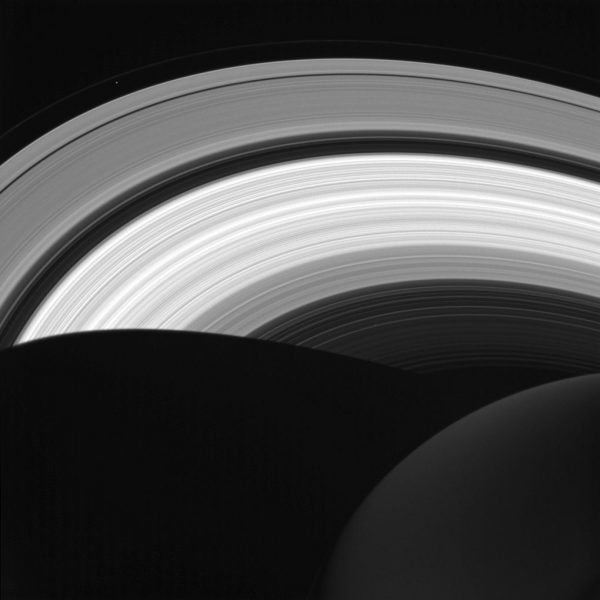
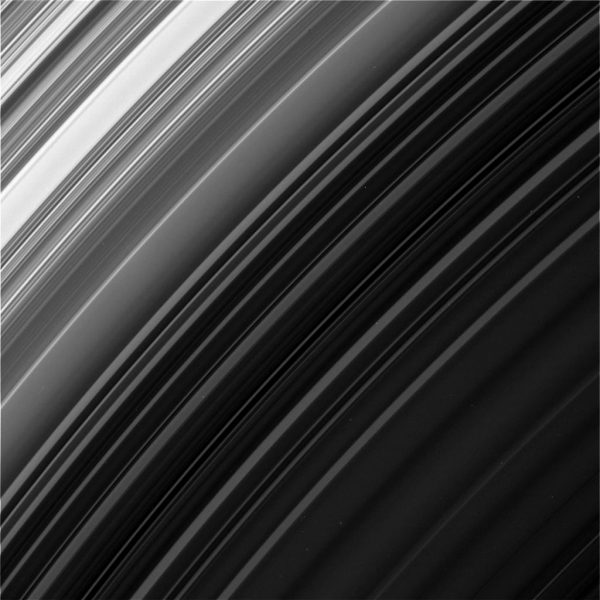
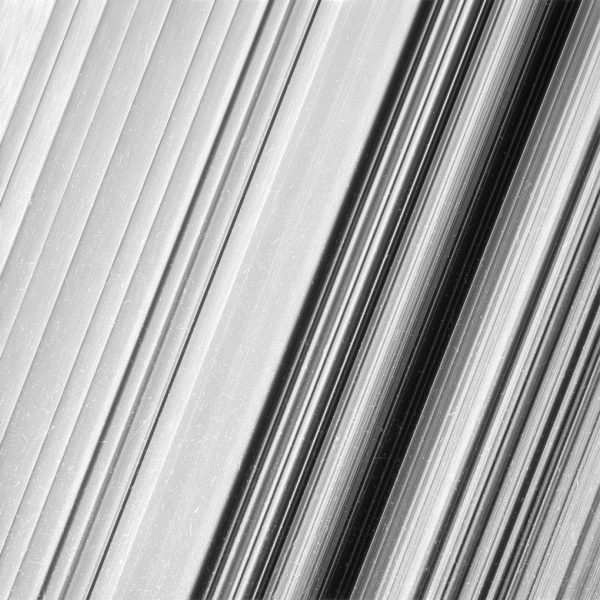
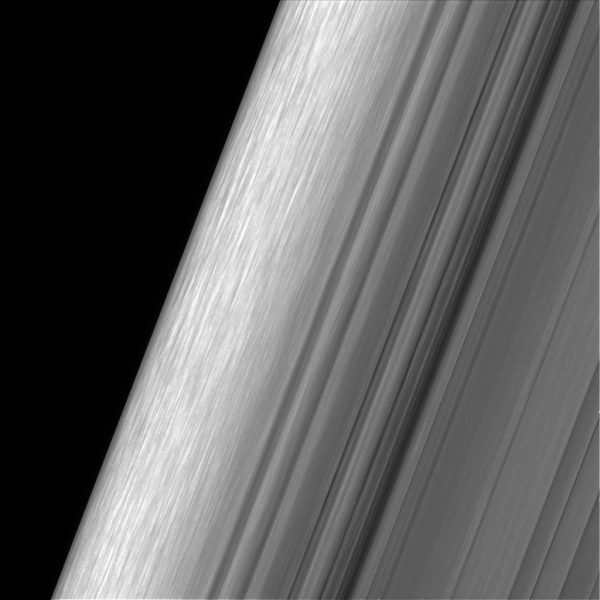
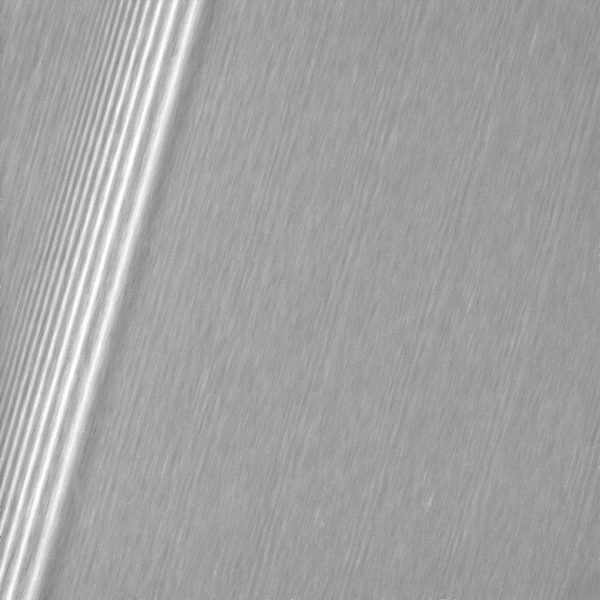
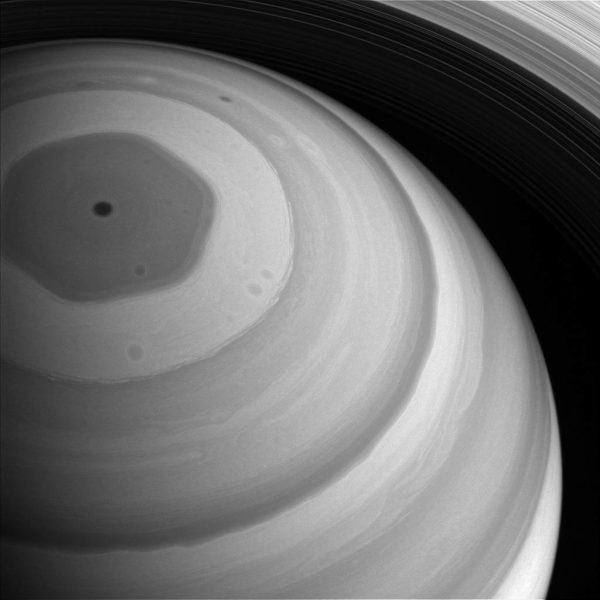
“Even though we’re flying closer to the F Ring than we ever have, we’ll still be more than 4,850 miles (7,800 kilometers) distant. There’s very little concern over dust hazard at that range,” said Earl Maize, Cassini project manager at NASA’s Jet Propulsion Laboratory, Pasadena, Calif.
The F Ring also has two other tiny “shepherd” moons called Prometheus and Pandora, which orbit just inside and outside the ring respectively.
“It’s taken years of planning, but now that we’re finally here, the whole Cassini team is excited to begin studying the data that come from these Ring-Grazing Orbits,” said Spilker. “This is a remarkable time in what’s already been a thrilling journey.”
On Sept. 15, 2017, when Cassini finally runs out of fuel, the spacecraft will fatally plunge into Saturn’s atmosphere, bringing this incredible mission to an end. It is being done this way on purpose, to prevent the spacecraft from possibly colliding with any of the moons, especially Enceladus or Titan, where contamination could occur from possible microbes still alive onboard.
Since starting to orbit Saturn in 2004, Cassini has revealed the Saturn system to be more diverse and bizarre than ever thought before. From moons like Pan and Atlas to Enceladus with its subsurface ocean and water vapor geysers, to Titan with its liquid methane/ethane lakes and seas, and Saturn itself with its unusual north polar hexagon, these worlds are like a miniature Solar System in themselves. Even after the mission ends, there will be enormous amounts of science data still to go through and analyze for many years ahead.
As Spilker also noted, “Cassini’s legacy of discoveries in the Saturn system is profound.” Indeed.
All of Cassini’s raw images can be seen here on the mission website, and more information about the Cassini mission itself is available here.
Be sure to “LIKE” AmericaSpace on Facebook and follow us on Instagram & Twitter!




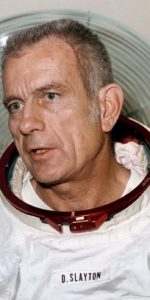
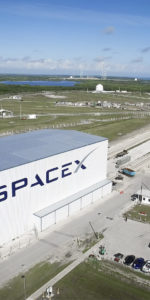
“NASA’s Cassini mission may be entering its last several months now, but that doesn’t mean there isn’t anymore cool science discoveries to be made.” The sentence should read, “that doesn’t mean there aren’t any more cool science discoveries to be made.” ARE DISCOVERIES, not IS DISCOVERIES. And ANY MORE, not ANYMORE. It would also be good if you would minimize contractions in topics like this. Having said that, thank you for the amazing article.
Fixed, thanks. I normally catch things like that but I was trying to deal with a lot of other things at the time as well, just FYI.
Atlas are quite Impressive and NEED Scientific Exploration of a more detailed nature.
They also look quite delicious 🙂
Alex, as a component of the 2010 Planetary Science Decadal Survey, JPL produced a mission study for a Saturn ring explorer mission. Link is below:
Mission Concept Study
Planetary Science Decadal Survey
Saturn Ring Observer Study Report
http://sites.nationalacademies.org/cs/groups/ssbsite/documents/webpage/ssb_059328.pdf
This discovery gave a surprising boost to the Flat Earth Society.